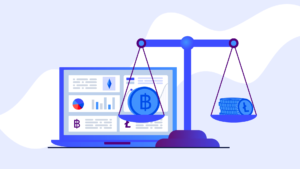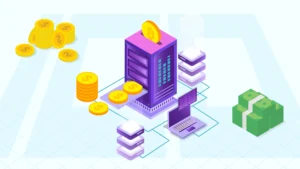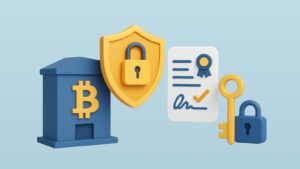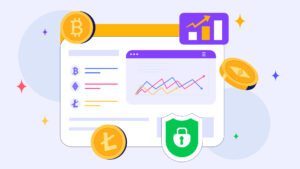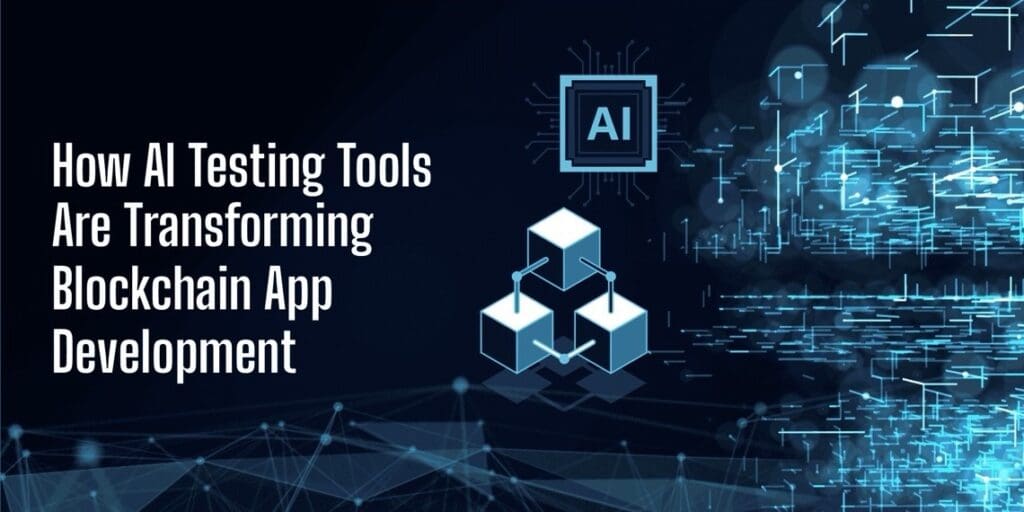
Blockchain technology has rapidly evolved from a cryptocurrency enabler to a foundational layer for decentralized applications (DApps), smart contracts, NFTs, and DeFi platforms. As these applications gain traction across industries—finance, supply chain, gaming, healthcare—their complexity also increases. However, ensuring quality, security, and performance in such decentralized ecosystems remains a significant challenge.
Enter AI testing tools. As blockchain architecture continues to mature, these intelligent testing platforms are transforming how DApps are developed, validated, and deployed. By automating testing processes, enhancing test coverage, and predicting bugs before they reach production, AI-driven tools like testRigor empower teams to scale quality assurance (QA) like never before.
In this article, we’ll explore how AI testing tools are reshaping the blockchain development lifecycle and what benefits they bring to decentralized systems.
The Unique Challenges of Testing Blockchain Applications
Blockchain applications are inherently different from traditional software in several key ways:
- Immutability: Once deployed, smart contracts and blockchain data cannot be altered. This makes it crucial to catch bugs early.
- Distributed Architecture: Testing across multiple nodes, wallets, and environments adds complexity.
- Real-World Financial Risk: Errors in smart contracts can result in major financial losses, as seen in many DeFi hacks.
- Lack of Standardized Testing Frameworks: Especially in newer chains and ecosystems.
- Asynchronous Events: Interactions like confirmations, consensus mechanisms, or oracle data responses introduce non-determinism.
Traditional testing approaches—manual testing or basic test automation services—fall short when faced with these constraints.
What Are AI Testing Tools?
AI testing tools leverage machine learning, natural language processing (NLP), and predictive analytics to create smarter, adaptive, and more scalable testing processes. Unlike traditional automated tests that are rigid and need constant maintenance, AI-powered testing tools:
- Interpret test scenarios in plain English using NLP
- Learn from application behavior to prioritize risky areas
- Auto-heal broken test cases by adapting to UI or logic changes
- Generate test cases based on user behavior patterns
- Automate regression, functional, end-to-end, and exploratory testing
One of the most robust platforms in this space is testRigor, which enables end-to-end test automation with minimal engineering input.
Why AI Testing Tools Are a Game Changer for Blockchain Developers
1. Improved Smart Contract Validation
Smart contracts operate autonomously and are immutable. Once deployed to the blockchain, there’s no rollback. This means any bug, typo, or logic flaw could lead to exploitation or loss of funds.
AI testing platforms can simulate thousands of contract interactions across edge cases. By combining static and dynamic analysis, they help catch vulnerabilities like:
- Integer overflows
- Reentrancy attacks
- Access control issues
- Logic errors across functions
With AI-based prioritization, high-risk areas of code receive the most testing coverage, ensuring robust contract security.
2. Faster Regression Testing Across Chains and Wallets
Whether your DApp supports Ethereum, BNB Chain, Solana, or Polkadot, regression testing is vital whenever a new feature or patch is released.
AI testing tools enable cross-chain compatibility testing at scale. Platforms like testRigor:
- Automate wallet integrations and multi-chain switching
- Simulate different gas fee structures and block confirmation times
- Allow reusable test scripts across UIs, APIs, and smart contracts
This reduces the test cycle from days to hours, allowing quicker releases and fewer bugs in production.
3. Natural Language Testing for Easier Collaboration
Blockchain projects often involve globally distributed teams—AI developers, QA engineers, product managers, and compliance officers. Communication gaps can lead to flawed test cases.
With natural language testing, anyone can write or read test scenarios without needing coding knowledge. For example:
“Click on ‘Connect Wallet’ button and verify MetaMask popup appears.”
This bridges collaboration gaps between technical and non-technical stakeholders while ensuring tests are readable, up-to-date, and easy to maintain.
4. Auto-Healing for Decentralized UI Changes
DApp interfaces often evolve with new wallet support, token listings, or network changes. Conventional test scripts break easily, requiring constant updates.
AI-powered tools use computer vision and machine learning to detect element changes and “heal” broken tests automatically. This means if a button label changes or a layout shifts, the test adapts rather than fails.
For Web3 developers working with dynamic UIs, this significantly reduces maintenance overhead.
5. Enhanced Security and Compliance Validation
Many blockchain apps must comply with regulations (AML/KYC, GDPR, etc.). AI testing tools can automatically:
- Validate user verification workflows
- Monitor for data leakage across layers
- Confirm encryption standards
- Check for permission vulnerabilities
They also generate logs and reports suitable for audits, helping companies build trust with users and regulators alike.
6. End-to-End Testing Across Hybrid Architectures
Most real-world blockchain apps use a hybrid architecture: smart contracts + off-chain services + UI layers. AI testing tools excel in such environments by:
- Supporting cross-platform testing (web, mobile, APIs)
- Connecting to off-chain data and oracles
- Validating database syncs, external calls, and token logic
This holistic testing ensures that no part of the user journey—on or off-chain—is left unchecked.
Case Example: How a DeFi Platform Scaled QA with AI Testing Tools
Imagine a DeFi lending protocol that supports multiple wallets, offers staking, integrates Chainlink oracles, and updates features monthly.
With traditional testing, each release meant:
- Dozens of manual test runs
- Engineers writing and rewriting scripts
- Broken tests from minor UI changes
- Days of QA cycles
After integrating AI testing tools like testRigor, the platform:
- Reduced test cycle time by 60%
- Enabled product managers to write test cases
- Caught logic bugs before smart contract deployment
- Released updates twice as fast with higher confidence
What to Look For in an AI Testing Tool for Blockchain Apps
Not all AI testing tools are created equal—especially when applied to the unique, fast-evolving world of blockchain development. To effectively meet the rigorous demands of decentralized architectures, your testing platform must go beyond basic automation and provide intelligent, adaptive capabilities. Here are the essential features to consider:
Natural Language Support for Test Creation
A high-quality AI testing tool should enable test creation using plain English. This allows non-technical stakeholders—such as product managers, QA analysts, and compliance officers—to contribute directly to test design. In blockchain development, where testing involves nuanced user journeys like wallet connections, smart contract calls, or gas fee estimations, natural language test authoring bridges the gap between business logic and technical execution. This drastically reduces onboarding time for new testers and enhances overall collaboration across teams.
Cross-Platform and Cross-Chain Testing Capabilities
Blockchain applications often span multiple interfaces and ecosystems: web UIs, mobile apps, browser extensions, and various blockchain networks (Ethereum, Solana, Avalanche, etc.). A robust AI testing tool should support seamless testing across these platforms and chains. It should simulate real-world scenarios, such as switching between mainnets and testnets, interacting with various wallet types, or handling fluctuating block confirmation times. Tools that enable automated testing in both on-chain and off-chain environments are critical for ensuring consistent functionality and performance.
Smart Contract Validation Support
Smart contracts form the backbone of most blockchain applications, from DeFi protocols to NFT marketplaces. Any tool you choose must offer specialized features to validate smart contract logic, events, permissions, and edge cases. This includes simulating various user inputs, validating gas consumption, testing access control, and checking for potential vulnerabilities (like reentrancy attacks or integer overflows). Some AI testing tools can even integrate with static analysis frameworks or blockchain simulators, providing a deeper layer of defense before mainnet deployment.
Auto-Healing and Self-Maintenance
Blockchain applications are dynamic by nature. UI components, smart contract methods, and API endpoints can change frequently. An AI-powered testing platform must be capable of auto-healing—adapting to UI changes such as text updates, element repositioning, or layout shifts without manual intervention. This reduces test flakiness, minimizes downtime, and saves engineering resources that would otherwise be spent maintaining brittle test scripts. For blockchain developers pushing rapid updates or working on iterative testnets, auto-healing is a non-negotiable asset.
Easy Integration with CI/CD Pipelines and Wallets
Continuous testing is only effective when it’s seamlessly woven into the development lifecycle. Your AI testing tool should integrate effortlessly with your CI/CD tools like Jenkins, GitHub Actions, GitLab, or CircleCI. Additionally, it should support integration with popular wallets (MetaMask, WalletConnect, Phantom, etc.) for automated interaction during test runs. This ensures that critical user flows—such as wallet connection, token approval, or multi-signature transactions—can be tested at every build, enabling faster feedback loops and more reliable releases.
High Scalability for Frequent Release Cycles
In the fast-paced world of blockchain, where time-to-market is critical, your testing framework must scale efficiently. Whether you’re supporting multiple DApps, managing a growing user base, or releasing frequent smart contract updates, the testing tool should be able to handle thousands of test cases across various environments. Scalability also means the ability to run parallel test executions, support multi-environment deployments (e.g., staging, devnet, mainnet), and maintain stable performance even under rapid test iteration.
The Future: AI-Driven Autonomous QA for Web3
As the Web3 landscape continues to mature, the next frontier is autonomous QA—systems that:
- Predict areas of failure before they occur
- Generate tests dynamically based on usage patterns
- Auto-adjust test strategies based on app updates
AI testing tools are at the heart of this evolution. They’re not just improving testing—they’re making it smarter, faster, and more resilient to the unique demands of blockchain systems.
Conclusion
In a domain where immutability, security, and decentralization rule, quality assurance cannot be an afterthought. Blockchain developers need tools that match the speed and complexity of the ecosystems they build in.
AI testing tools like testRigor are no longer a luxury—they’re a necessity. They reduce testing time, improve product quality, prevent costly bugs, and empower every team member to contribute to QA.
For blockchain applications aiming to lead the market with innovation and reliability, integrating AI into your testing stack may be the best investment you can make.

